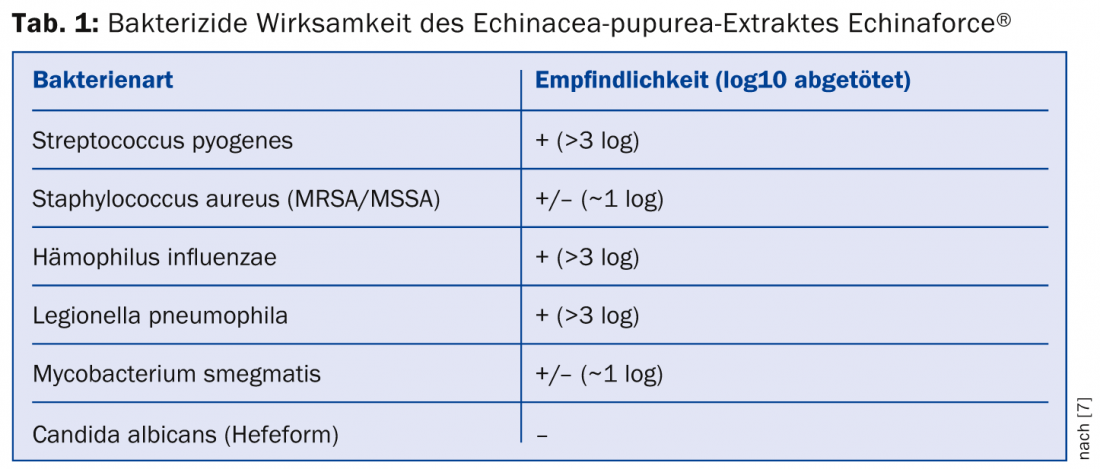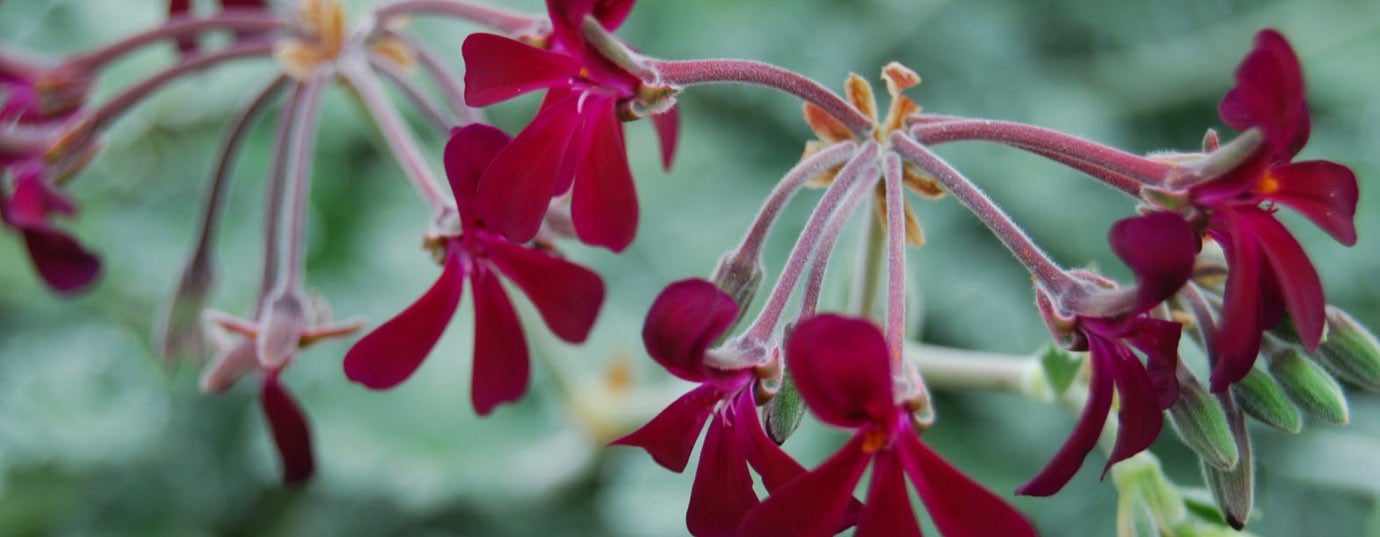Herbal antibiotics in the true sense of the word do not exist. But nature provides us with strategies that can be helpful in case of infection. In the following, some herbal applications against viral and bacterial infections as well as against skin fungi are presented. This is only a selection. A comprehensive account goes far beyond the scope of this article.
The term “herbal antibiotics” appears repeatedly in texts describing complementary medicine treatments. However, the authors of such texts are not proven experts. Because real experts in phytotherapy know that there are no plant antibiotics in the true sense of the word, just as there are no plant estrogens. This term can also be found again and again in pseudoscientific texts. No serious expert in phytotherapy advises to use herbal preparations instead of antibiotics in case of pneumonia, sepsis or meningitis.
Herbal anti-infectives
However, this does not mean that without antibiotics one is defenseless against all infectious diseases. This is because some medicinal plants can be used to make preparations that are very good and effective strategies against certain bacterial, viral or mycotic diseases. In contrast to synthetic antibiotics, in this case it is better to speak of herbal or natural anti-infectives. But especially in the age of increasing antibiotic resistance, it should be considered whether antibiotics must always be prescribed immediately for every infection. This is because, unlike antibiotics, no resistance occurs in herbal anti-infectives.
Infections of the respiratory tract
Respiratory infections are among the most common infections and affect millions of people, especially in winter, who are then plagued by fever, cough and aching limbs for several days to several weeks. Very often, however, antibiotics are prescribed, although it is known that the vast majority of flu infections are caused by viruses, against which antibiotics are known to be ineffective. The reason given for the use of antibiotics is that, on the one hand, a so-called superinfection can be prevented and, on the other hand, a large number of patients expressly wish to be treated with antibiotics.
Echinacea
Echinacea is a highly scientifically studied medicinal plant that can be used to combat respiratory tract infections caused by viruses. Botanically, the coneflower forms the genus Echinacea. Echinacea purpurea (Fig. 1) is predominantly used , somewhat less frequently also Echinacea angustifolia and even more rarely Echinacea pallidum. Preparations from echinacea consist either of the pressed juice of the above-ground parts or are made as an extract from the plant incl. the plant itself. obtained from the root.

Various studies demonstrate the efficacy of corresponding preparations for the treatment of respiratory diseases [1-5; see also issue 10/2013]. Especially the extract from the whole plant seems to have a pronounced virucidal effect, especially against viruses that have a membrane [4,5]. Recent studies also show that this echinacea extract is effective against certain bacteria (Table 1) [6].

Pelargonium sidoides
The effectiveness of the South African plant Pelargonium sidoides in acute bronchitis has already been reported in this journal (see issue 1/2014). Therefore, it will not be discussed in detail here and only be mentioned once again that various clinical studies conducted with the Pelargonium sidoides extract EPs 7630 document that this extract leads to a statistically significant and clinically relevant improvement in health-related quality of life and therapy assessment [8–10].
Essential oils
Essential oils are mixtures of various terpenes and sesquiterpenes or aromatic compounds that occur in a wide variety of plant species, are volatile and have a characteristic odor. Essential oils are dissolved from the plants using various methods. Steam distillation plays the most important role in this process.
For as long as there have been human civilizations, essential oils have been used for cult purposes, perfumery or medicinal purposes. These include essential oils of peppermint, eucalyptus, thyme, anise, caraway, sage, lemon balm, chamomile, rose, jasmine, angelica, coriander, cinnamon, hyssop, cajeput, ginger, tea tree, etc.
Inhalations
Especially for upper respiratory tract infections, inhalations with essential oil mixtures prove to be very helpful. In this case, you can put a few drops of an appropriate concentrate in a bowl of hot water and then inhale for a few minutes. Such a measure can favorably influence the course of an upper respiratory tract infection. Because unlike conventional medicine, which has little to offer against viral infections, there are a number of essential oils with antiviral activity [11–14].
Herpes simplex
Corresponding preparations with essential oils as active ingredient are used again and again against recurrent herpes simplex infections, called fever blisters, because the conventional active ingredients, above all acyclovir, often show little convincing effect. A clinical study could even prove the effectiveness of such a preparation [15].
Skin fungi, wound healing
A number of essential oils are said to have antifungal activity. Recently, several studies have been done with tea tree oil, the essential oil from Melaleuca alternifolia, a tree native to Australia. The results and practical experience of doctors practicing alternative medicine speak for the effectiveness of tea tree oil [16]. Further, there are reports showing a positive effect of tea tree oil on wound healing.
Cystitis
A pronounced cystitis is best treated with antibiotics. However, before this has really broken out, you can try to stop it with appropriate herbal preparations. These include drinking tea mixtures or taking tinctures of diuretic and bladder disinfecting herbs such as birch leaves, bean pods, horsetail, cranberry, bearberry, etc.
Summary
Classic antibiotics from nature do not exist. However, there are a number of medicinal plants with anti-infective activity that can be successfully used for respiratory tract infections, especially against infections caused by viruses, and for various other infections, such as incipient cystitis or herpes simplex. Purely natural treatments can also be successful against skin fungi.
Literature:
- Barnes J, et al: Echinacea species (Echinacea angustifolia [DC .] Hell., Echinacea pallida [Nutt .] Nutt., Echinacea purpurea [L .] Moench): a review of their chemistry, pharmacology and clinical properties. J Pharm Pharmacol 2005; 57: 929-954.
- Vimalanathan S, et al: Echinacea purpurea aerial parts contain multiple antiviral compounds. Pharmac Biol 2005; 43(9): 740-745.
- Hudson J, et al: Characterization of antiviral activities in Echinacea root preparations. Pharmac Biol 2005; 43: 790-796.
- Sharma M, et al: Induction of proinflammatory cytokines by respiratory viruses and reversal by standardized Echinacea, a potent antiviral herbal extract. Antiviral Res 2009; 83: 165-170.
- Pleschka S, et al: Antiviral properties and mode of action of standardized Echinacea purpurea extract against highly pathogenic avian influenza virus (H5N1, H7N7) and swine-origin H1N1 (S-OIV). Virology J 2009; 6: 197.
- Sharma S, et al.: Bactericidal and anti-inflammatory properties of a standardized Echinacea extract (Echinaforce): Dual actions against respiratory bacteria. Phytomedicine 2010; 17: 563-568.
- Schapowal A: Triple action of the herbal medicine Echinaforce® in the therapy of colds and influenza. Ars Medici thema Phytotherapy 2010; 10(4/5): 10-14.
- Kamin W, et al: Efficacy and tolerability of EPs 7630 in children and adolescents with acute bronchitis. Int J Clin Pharmacol Ther 2010 Mar; 48(3): 184-191.
- Matthys H, et al: Pelargonium sidoides in acute bronchitis – Health-related quality of life and therapy assessment from a patient perspective under treatment with EPs 7630. WMW 2010; 160(21-22): 564-570.
- Matthys H, et al: Efficacy and tolerability of EPs 7630 tablets in patients with acute bronchitis: a randomised, double-blind, placebocontrolled dose-finding study with a herbal drug preparation from Pelargonium sidoides. Curr Med Res Opin 2010; 26: 1413-1422.
- Li X, et al: Melaleuca alternifolia concentrate inhibits in vitro entry of influenza virus into host cells. Molecules 2013; 18(8): 9550-9566.
- Civitelli L, et al: In vitro inhibition of herpes simplex virus type 1 replication by Mentha suaveolens essential oil and is mane component piperitone oxide. Phytomedicine 2014; 21(6): 857-865.
- Astani A, et al: Melissa officinalis extract inhibits attachment of herpes simplex virus in vitro. Chemotherapy 2012; 58(1): 70-77.
- Garozzo A, et al: Activity of Melaleuca alternifolia (tea tree) oil on influenza virus A/PR/8:study on the mechanism of action. Antiviral Res 2011; 89(1): 83-88.
- Saller R, et al: Combined herbal preparation for topical treatment of Herpes labialis, Forschende Komplementärmedizin und Klassische Naturheilkunde 2001; 8: 373-382.
- Satche AC: Treatment of interdigital tinea pedis with 25% and 50% tea tree oil solution: a randmized, placebo-controlled, blinded study. Australas J Dermatol 2002; 43(3): 175-178.
HAUSARZT PRAXIS 2015; 10(2): 2-3











